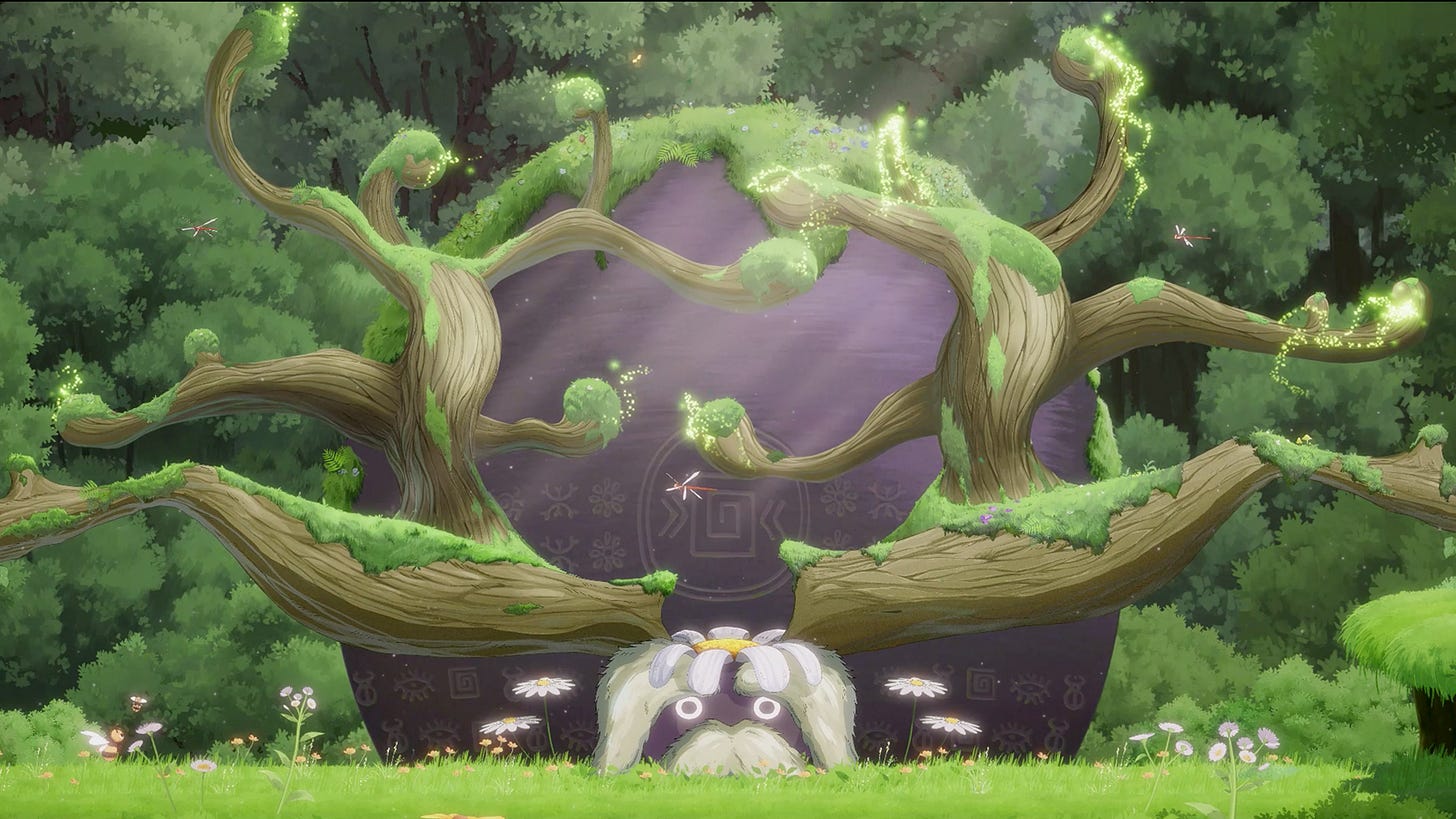HOA is the kind of game that wears its influences on its sleeve. Within minutes, the orchestral score and painterly art style invokes classic Studio Ghibli films, such as Spirited Away and Ponyo. Narratively, the game is inspired by Vietnamese folklore and the orchestral score would feel right at home in silent animated films. The director for HOA, Son Cao Tung, talked to WIRED about wanting to make a game without violence and wanted to inspire players to explore with childlike curiosity. This all sounds great, and HOA mostly lands the perfect balance. That is, until the end. So, be wary of spoilers ahead.
HOA is a puzzle-platformer in the same vein as a Metroidvania or one of Playdead’s games, such as LIMBO and Inside. You take control of HOA, a cloaked creature who is separated from their home as a child and returns to find answers. During your quest, you come across other creatures who help piece together your past and it quickly becomes clear that HOA is the survivor of some kind of cataclysmic event. There’s a lot of classic Ghibli and Disney storytelling going on in HOA and the vibe mostly works. Characters, for the most part, have charming dialogue and friendly designs. Classical music plays in the background in an unbroken performance, as though you’re listening to music separately from the game. The risk of failure is low to non-existent as even the worst of mis-timed jumps only result in replaying a few minutes of playtime.
This all should work. However, two things really dampen the experience: the myriad of technical problems and the narrative climax and ending. I want to get the technical issues out of the way first. The development team for HOA was tiny and inexperienced in game development and it shows. The frame-rate really takes a hit, but in the most unusual circumstances. Wide and open environments often run smoothly, but sometimes a cramped corridor with comparatively few interactive elements will slow to a crawl and that makes basic navigation an exercise in frustration, especially when you’re expected to jump on small landings or critters who will fly away after a couple of seconds. These frustrating moments really break the game’s otherwise Zen-like flow. Though nothing breaks the flow quite like the climax. Again, spoilers ahead.
HOA discovers that their people were hunted down by robots and you are the sole survivor. You eventually fall victim to the same robots and then play through a twisty-turny version of the previous levels, but with fascinating visual twists. Some are upside-down or sideways or circular and other stages play with reverse controls. This sounds very creative and inventive, but the game’s fundamentals don’t keep up. Jumps are easily missed due to the low frame-rate and the core platforming is not precise enough for what HOA expects you to do. Not only that, but there is a chase sequence with HOA and the giant robot that clearly was meant to be interactive, but was turned into a cutscene. Therefore, the sequence becomes awkwardly long with HOA running away from a mostly unseen enemy, but there’s all the bombast of a typical narrative climax. Nothing about this jells in a cohesive manner.
By the time credits rolled, I was so mad, that I forgot about all the stuff HOA does well. The music is great, the art is gorgeous, the puzzles are light and breezy, and the atmosphere is impeccable. It’s only two or three hours of playtime for most players, so if you decide to jump in, you might have a pretty fun afternoon. I just hope you have a better time than me.


